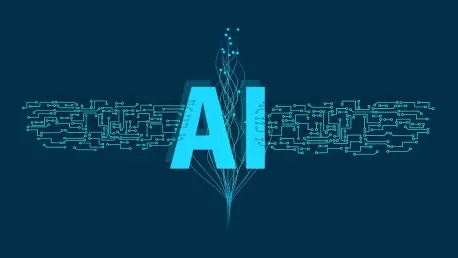Integrating AI into the workplace offers immense potential for increasing productivity and innovation. Yet, there are significant challenges in achieving uniform adoption across different sectors and levels within companies. Discrepancies in perceptions, communication gaps, and training deficits all contribute to the complexity of seamlessly blending AI into business practices. This article delves into these issues and explores actionable solutions for companies aiming to bridge AI adoption gaps and enhance training.
Disparities in AI Adoption
A notable disparity exists between what company leaders report and what employees experience regarding AI adoption. Over 90% of chief human resources officers at Fortune 500 companies assert that their organizations are implementing AI tools. However, only 33% of U.S. employees from various industries affirm that their workplaces are adopting AI. This gap widens further among frontline workers, with only 21% acknowledging AI integration compared to 44% of white-collar employees.
These discrepancies can create an atmosphere of uncertainty and skepticism among employees, who may feel disconnected from the company’s technological advancements. Consequently, developing a deeper understanding of AI’s benefits becomes paramount for all employees, regardless of their position within the organization. The discrepancy between leadership’s claims and the employees’ experiences points to a critical gap that needs to be addressed for successful AI integration.
Communication Gaps and Their Impact
One of the main barriers to successful AI adoption is a lack of transparent communication. Only 15% of employees are aware of their company’s plans to integrate AI, signaling a significant communication gap. Without clear, consistent messaging from leadership, employees may feel left in the dark about how AI tools will affect their work and job security. Effective communication should detail the strategic goals of AI adoption, the technology’s potential benefits, and the measures in place to manage the transition.
Regular updates and open forums where employees can ask questions and provide feedback can foster a more inclusive and informed work environment. Such initiatives help dispel myths and cultivate a culture of acceptance around AI. When employees understand the purpose and potential of AI, they are more likely to support its integration and actively engage in its implementation. Clear communication is essential for setting the stage for AI-related changes.
Importance of Comprehensive Training Programs
Training is crucial to mitigating fears and preparing employees for AI integration. Only a small percentage of employees report having received formal training on new AI tools, which can lead to unpreparedness and anxiety. Comprehensive training programs should be standardized and accessible, ensuring all employees receive the necessary skills and knowledge to work alongside AI technologies.
Training programs should be dynamic and adapted to address different learning paces and styles. Hands-on workshops, e-learning modules, and real-world AI application scenarios can make the learning experience more engaging. By investing in robust training initiatives, companies can empower their workforce and smooth the transition to an AI-driven work environment. Effective training can bridge the gap between employees’ current skills and the requirements brought about by AI, reducing anxiety and resistance.
Use Cases and Productivity Gains
AI’s application in the workplace ranges from idea generation and task automation to data consolidation and analysis. Despite a relatively low daily usage rate of 4%, nearly half of the employees report significant productivity improvements due to AI. This increase in efficiency arises from reducing manual, repetitive tasks, enabling employees to focus on more strategic and creative activities.
For example, AI-driven data analysis can extract actionable insights faster than traditional methods, leading to more informed decision-making. Additionally, AI tools can streamline customer service operations by automating responses to common inquiries, allowing human agents to tackle more complex issues. These practical applications illustrate the multifaceted benefits AI can bring to various job functions. When properly implemented, AI can enhance productivity, job satisfaction, and overall work experience.
Employee Sentiment Towards AI
Despite the demonstrated benefits, many employees harbor concerns about AI’s impact on job security. Roughly 75% of Americans worry that AI could replace jobs, and 77% express distrust towards businesses handling AI responsibly. These fears stem from a lack of understanding and direct involvement in AI-related processes. Addressing these concerns requires a concerted effort from company leaders to foster a supportive environment.
Historical parallels, such as the Industrial Revolution, can be drawn to explain how technological advancements create new opportunities even as they phase out certain roles. Emphasizing a commitment to upskilling and reskilling employees can also alleviate anxiety about job displacement. Trust-building measures, such as transparency in AI-related decisions and showcasing success stories, can help mitigate fears and promote a positive outlook toward AI adoption.
Navigating Ethical Challenges
AI’s powerful decision-making capabilities present ethical challenges that companies must navigate carefully. For instance, an AI system might recommend actions that could inadvertently reinforce socio-economic inequalities, such as suggesting the closure of stores in economically disadvantaged areas to maximize profits. Companies need to develop ethical frameworks to guide AI usage, ensuring decisions are fair and equitable.
Ethical guidelines should prioritize transparency, accountability, and inclusivity. Moreover, involving diverse perspectives in the development and deployment of AI systems can help identify and mitigate potential biases, fostering more responsible AI practices. By embracing ethical considerations, companies can create AI solutions that benefit a broader spectrum of stakeholders, promoting long-term sustainability and trust.
Strategic AI Integration
Achieving the full benefits of AI requires intentional and strategic integration efforts from top management. Simply introducing AI tools without a coherent strategy may lead to fragmented adoption and suboptimal outcomes. A top-down approach ensures that AI adoption aligns with the company’s broader strategic goals and values. Strategic plans should include clear timelines, resource allocation, and performance metrics to monitor progress and make necessary adjustments.
By embedding AI within the company’s overall vision, leaders can create a unified approach that permeates all levels of the organization, promoting cohesive and effective AI utilization. Intentional strategy and deliberate planning are key to unlocking AI’s transformative potential, while ensuring alignment with the company’s objectives and culture.
Overcoming Adoption Barriers
Integrating artificial intelligence (AI) into the workplace offers significant potential for boosting productivity and sparking innovation. However, achieving widespread adoption across various sectors and organizational levels presents substantial challenges. Differences in how employees perceive AI, communication barriers, and gaps in training all add to the complexity of seamlessly integrating AI into business operations.
Some employees may be resistant to AI due to fears of job displacement or a lack of understanding of its benefits. Effective communication about AI’s role and advantages is crucial for overcoming these perceptions. Training programs must be comprehensive and accessible, ensuring that all employees, regardless of their position, gain the necessary skills to work alongside AI technologies.
This article delves into these issues in-depth, presenting actionable solutions for businesses aiming to bridge gaps in AI adoption. By addressing training deficiencies and improving communication, companies can better integrate AI, leading to a more cohesive, innovative, and productive work environment.









